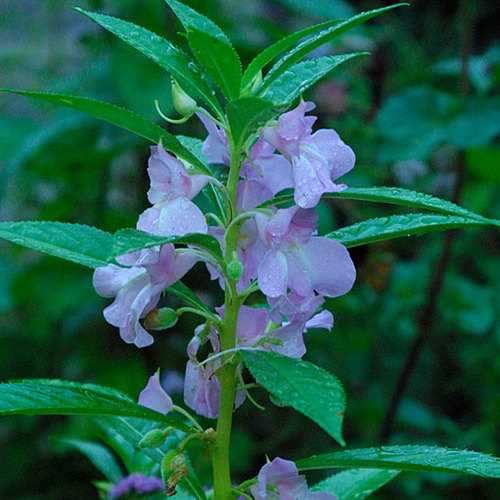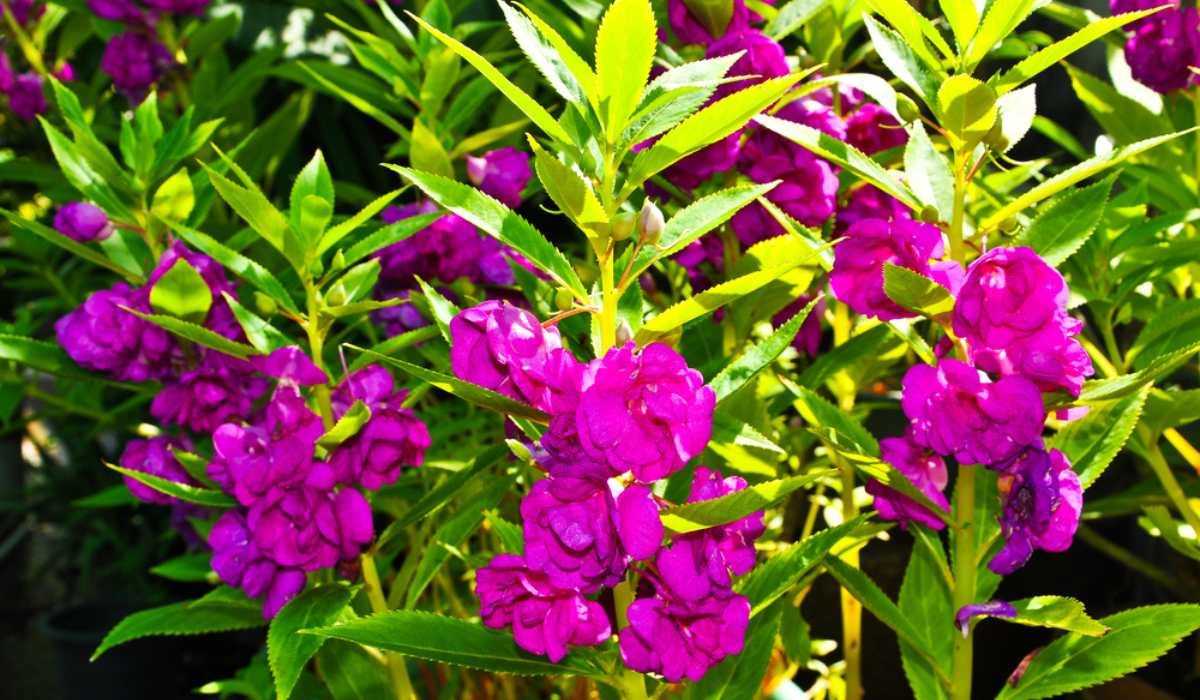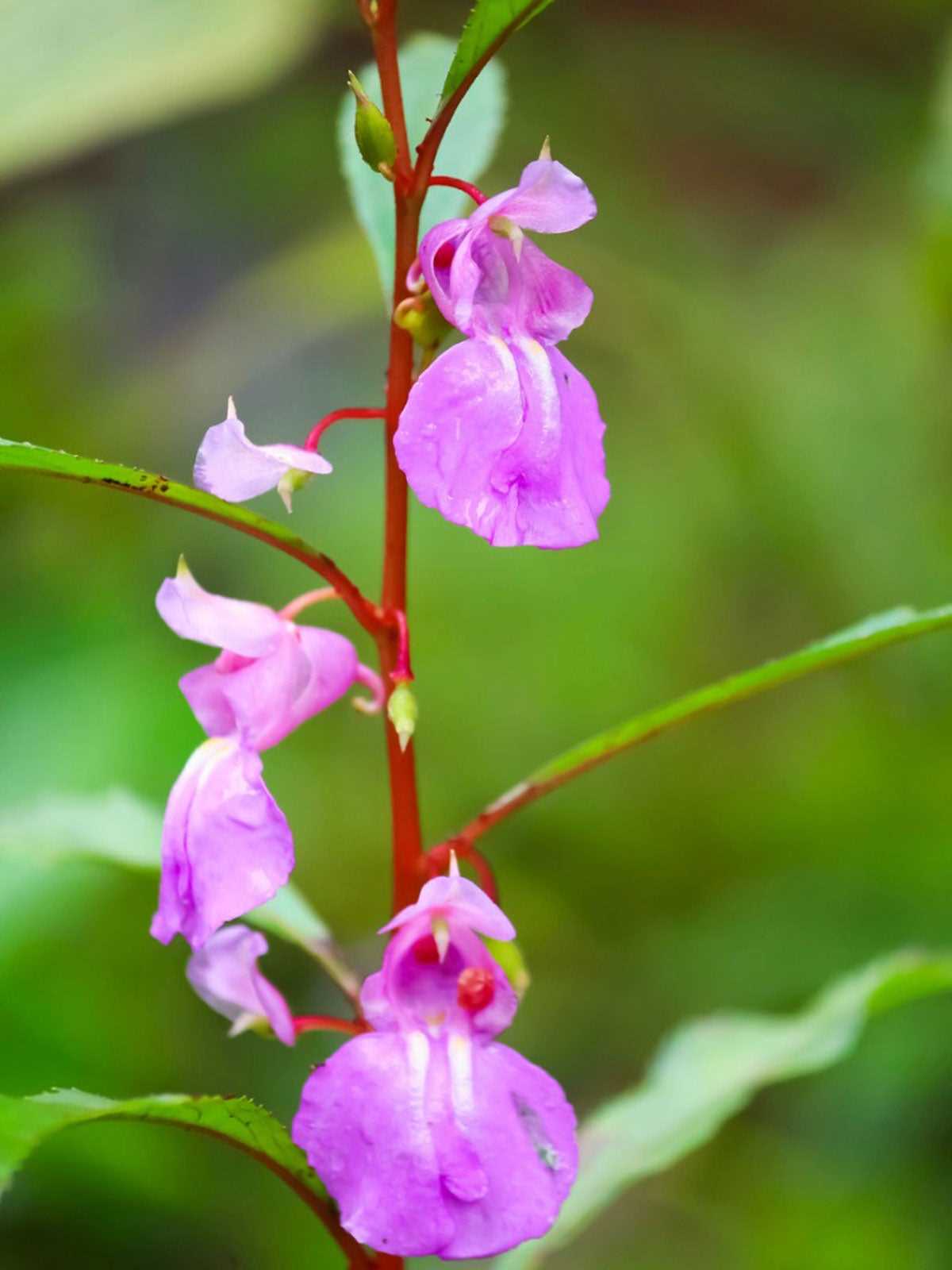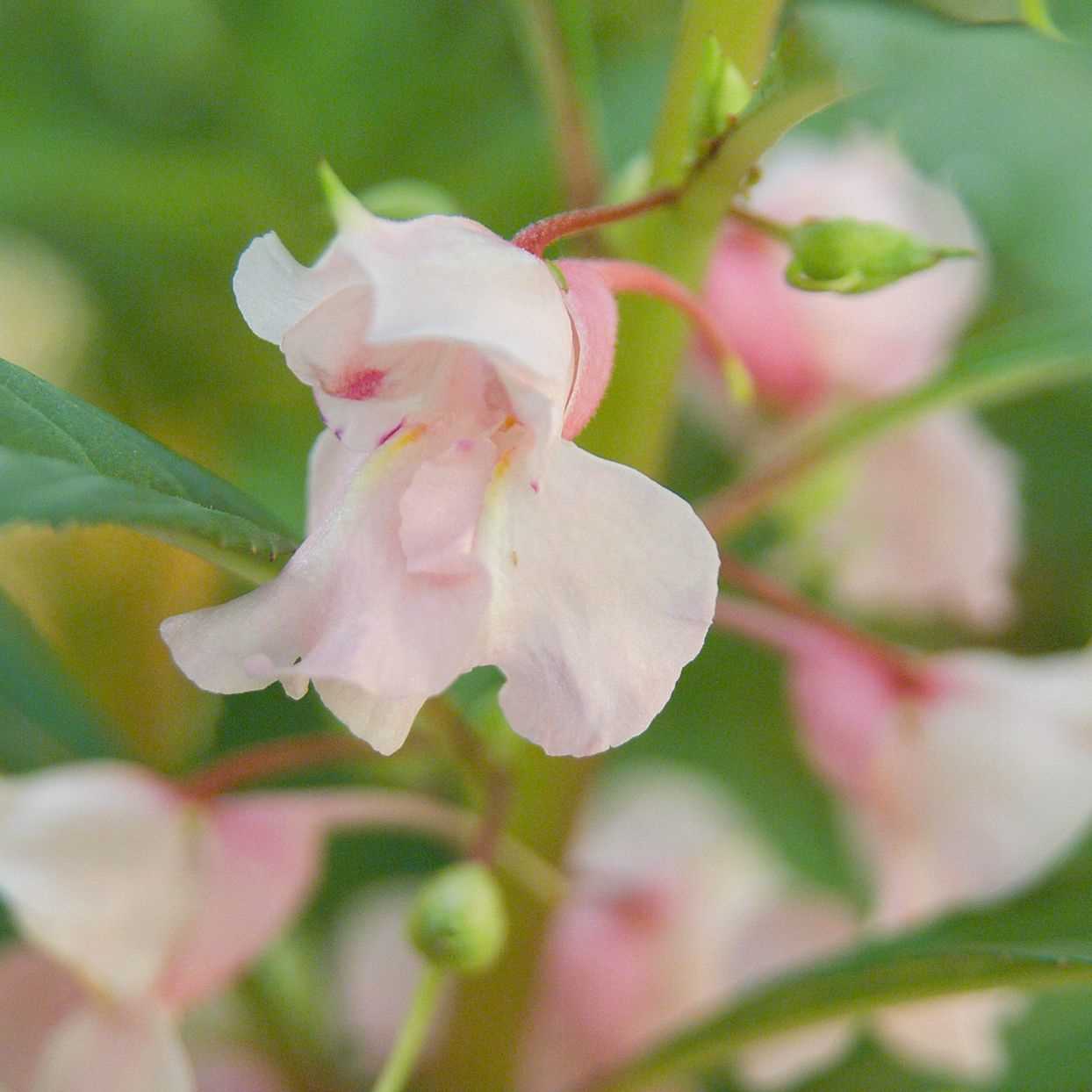- Preparing the Soil for Balsamina Seedlings
- Choosing the Right Seeds for Balsamina
- Variety
- Quality
- Source
- Storage
- Sowing Season
- Quantity
- Sowing Balsamina Seeds at the Right Time
- Providing the Proper Light Conditions for Balsamina Seedlings
- 1. Choose a Bright Location:
- 2. Use Artificial Lighting:
- 3. Rotate the Seedlings:
- 4. Monitor Light Intensity:
- 5. Gradually Harden Off Seedlings:
- Watering Balsamina Seedlings
- Maintaining the Right Temperature for Balsamina Seedlings
- 1. Choose a suitable location
- 2. Provide supplemental heat if necessary
- 3. Use a thermometer
- 4. Consider using a heating mat
- 5. Be mindful of daytime and nighttime temperature differences
- 6. Monitor air circulation
- Transplanting Balsamina Seedlings
- 1. Timing is key
- 2. Choose the right location
- 3. Prepare the soil
- 4. Water the seedlings
- 5. Dig the planting holes
- 6. Transplant the seedlings
- 7. Water again
- 8. Mulch and provide support
- 9. Monitor and care for the seedlings
- Caring for Balsamina Seedlings in the Outdoor Garden
- 1. Choose the Right Location
- 2. Prepare the Soil
- 3. Planting
- 4. Watering
- 5. Mulching
- 6. Fertilizing
- 7. Support
- 8. Deadheading
- 9. Pest and Disease Control
- 10. Winter Protection
- Questions and Answers:
- What type of soil is best for balsamina seedlings?
- When should I sow balsamina seeds?
- How should I water balsamina seedlings?
- Where should I place balsamina seedlings for optimal growth?
- Videos: The Complete Guide To Sowing Seeds

If you are interested in growing balsamina, also known as impatiens or touch-me-not, from seedlings, there are a few tips you need to know to ensure successful germination and healthy growth. Balsamina is a stunning annual plant that produces vibrant flowers in shades of pink, red, orange, and white. It is a popular choice for gardeners due to its easy care and ability to thrive in both sun and partial shade.
Tip 1: Start Indoors
Balsamina seeds can be started indoors, about 8-10 weeks before the last expected frost date in your area. Fill a seed tray or pots with a well-draining potting mix and sow the seeds on the surface, lightly pressing them into the soil. Keep the soil consistently moist but not waterlogged. Place the tray or pots in a warm location with indirect sunlight.
Tip 2: Provide Bottom Heat
Balsamina seeds germinate best with some bottom heat. You can use a seedling heat mat to provide this heat, or place the seed tray or pots on top of a warm appliance, such as a refrigerator or water heater. This extra warmth will encourage faster and more uniform germination.
Tip 3: Thin Out Seedlings
Once the seedlings have emerged and developed their first set of true leaves, it’s time to thin them out. Balsamina seedlings should be spaced about 2-3 inches apart to allow for proper air circulation and prevent overcrowding. Carefully remove the weaker seedlings, leaving only the strongest and healthiest ones.
Tip 4: Transplant Outdoors
When all danger of frost has passed and the seedlings have grown to a height of about 3-4 inches, they can be transplanted outdoors into prepared garden beds or containers. Choose a location that receives partial sun to dappled shade, as balsamina prefers some shade during the hottest part of the day. Dig small holes and gently transplant the seedlings, ensuring that the soil level remains the same as it was in the seed trays or pots.
By following these top tips for sowing balsamina on seedlings, you can enjoy an abundance of beautiful flowers throughout the growing season. Remember to water regularly, provide some shade, and enjoy the stunning colors that balsamina brings to your garden.
Preparing the Soil for Balsamina Seedlings
Proper soil preparation is essential for the successful growth of balsamina seedlings. By creating a nutrient-rich and well-draining soil, you can ensure that your seedlings have the best possible start. Follow these steps to prepare the soil for your balsamina seedlings:
- Choose the Right Location: Select a sunny spot in your garden where the balsamina seedlings can receive at least 6-8 hours of direct sunlight each day. Avoid areas with heavy shade or strong winds, as these conditions can negatively affect the growth of the seedlings.
- Clear the Area: Remove any weeds, rocks, or debris from the selected area. This will help prevent competition for nutrients and create a clean environment for the balsamina seedlings to grow.
- Loosen the Soil: Use a garden fork or tiller to loosen the soil to a depth of at least 6-8 inches. This will improve the soil’s drainage and allow the roots of the seedlings to penetrate easily.
- Amend the Soil: Balsamina seedlings prefer rich, well-draining soil. Add organic matter such as compost or well-rotted manure to the soil to improve its fertility and structure. Mix the organic matter thoroughly into the soil using a garden fork or shovel.
- Test the Soil pH: Balsamina seedlings prefer slightly acidic to neutral soil with a pH range of 6.0-7.0. Use a soil testing kit to determine the pH level of your soil. If the pH is too low or too high, you can adjust it by adding lime or sulfur accordingly.
- Level the Soil: Rake the soil to create a smooth and level surface. This will provide an even growing environment for the balsamina seedlings and prevent water from pooling around the plants.
- Water the Soil: Before sowing the balsamina seedlings, thoroughly water the soil to ensure that it is sufficiently moist. This will help the seeds germinate and establish well.
Following these steps will help you prepare the perfect soil for your balsamina seedlings, setting them up for healthy growth and abundant blooms.
Choosing the Right Seeds for Balsamina
When sowing Balsamina on seedlings, it is important to choose the right seeds to ensure successful germination and growth. Here are some tips for selecting the best seeds for your Balsamina plants:
Variety
There are different varieties of Balsamina available, each with its own unique characteristics. Before purchasing seeds, consider the specific traits you are looking for in your plants. Some popular varieties include:
- Dwarf Balsamina: This variety is compact and suitable for small gardens or containers.
- Tall Balsamina: This variety can reach up to 2-3 feet in height and is often used in borders or as a background plant.
- Double Balsamina: This variety produces flowers with double petals, giving them a fuller, more vibrant appearance.
Quality
When choosing Balsamina seeds, it is important to consider their quality. Look for seeds that are plump and uniform in size. Avoid seeds that are discolored, damaged, or shriveled, as they may have a lower germination rate.
Source
It is recommended to purchase seeds from reputable suppliers or nurseries. This ensures that the seeds are reliable and free from diseases or pests. Check for reviews and recommendations before making a purchase.
Storage
Proper storage of seeds is crucial for maintaining their viability. Store your Balsamina seeds in a cool, dry, and dark place, preferably in an airtight container. This helps to prevent moisture and temperature fluctuations that can reduce seed quality.
Sowing Season
Consider the appropriate sowing season for Balsamina in your region. Balsamina is usually sown in the spring when the soil temperature has warmed up. Make sure to check the recommended sowing time for your specific variety of Balsamina.
Quantity
Depending on your gardening needs, determine the quantity of seeds you will require. Consider the space available for planting and the desired number of plants. It is always a good idea to have some extra seeds on hand in case of low germination rates.
By following these tips and choosing the right seeds for your Balsamina plants, you can increase your chances of successful germination and growth.
Sowing Balsamina Seeds at the Right Time
Timing is crucial when it comes to sowing Balsamina seeds. Here are some top tips to ensure you sow them at the right time:
- Know your climate: Balsamina seeds are best sown when the temperature is consistently warm, around 70-75°F (21-24°C). If you live in a region with colder winters, wait until the risk of frost has passed before sowing.
- Check the frost date: Find out the average date of the last frost in your area and use this as a guideline for when to sow your Balsamina seeds. Sowing too early can result in frost damage, while sowing too late may not allow enough time for the seeds to mature.
- Plan ahead: Balsamina seeds take approximately 8-10 weeks to reach transplanting size. Counting back from the last frost date, determine when you should start sowing the seeds indoors.
- Start indoors: To give your Balsamina seeds a head start, start them indoors in seed trays or small pots. Fill the containers with well-draining potting mix and sow the seeds according to the package instructions.
- Provide optimal conditions: Place the seed trays or pots in a warm and well-lit area, such as near a sunny window or under grow lights. Keep the soil consistently moist but not waterlogged.
- Transplant outdoors: Once the danger of frost has passed and the seedlings have reached a height of around 3-4 inches (7-10 cm), they can be transplanted outdoors into their final growing location. Choose a spot with well-draining soil and partial shade.
- Space properly: Balsamina plants need sufficient space to grow and thrive. Space the transplants at least 12-18 inches (30-45 cm) apart to allow for adequate air circulation and prevent overcrowding.
- Protect from extreme heat: Balsamina plants can be sensitive to intense heat, so providing some shade during the hottest part of the day can help prevent stress and sunburn.
By following these tips, you can ensure that you sow your Balsamina seeds at the right time and set them up for success in your garden.
Providing the Proper Light Conditions for Balsamina Seedlings


Light is an essential factor for the healthy growth of balsamina seedlings. Attending to their light needs will help ensure strong and vibrant plants. Here are some tips for providing the proper light conditions:
1. Choose a Bright Location:
Place your balsamina seedlings in a location where they can receive bright, indirect sunlight for at least 6 hours a day. Avoid placing them in direct sunlight as it may cause the leaves to burn.
2. Use Artificial Lighting:
If you don’t have access to a sunny spot, or if you are starting your seedlings indoors, artificial lighting can be used to supplement natural light. Use fluorescent lights or grow lights, positioning them about 6 to 12 inches above the seedlings. Keep the lights on for 12 to 16 hours a day.
3. Rotate the Seedlings:
To ensure even growth and prevent the seedlings from leaning towards the light source, rotate the seedling trays or pots regularly. This will help the plants receive light from all sides and develop uniformly.
4. Monitor Light Intensity:
Pay attention to how the seedlings respond to the light. If they appear leggy or stretched out, it may be an indication that they are not receiving enough light. On the other hand, if the leaves start to yellow or develop brown spots, it could be a sign of too much light or burning. Adjust the light intensity accordingly.
5. Gradually Harden Off Seedlings:
When the balsamina seedlings have grown to a stable size and the risk of frost has passed, gradually acclimate them to outdoor conditions. Start by placing them in a shaded area for a few hours a day, gradually increasing the exposure to sunlight over a week or two. This will help the plants adjust to the outdoor light intensity and prevent shock.
By providing the proper light conditions, your balsamina seedlings will thrive and be ready for transplanting into the garden or larger containers.
Watering Balsamina Seedlings
Proper watering is crucial for the healthy growth of balsamina seedlings. Here are some tips to ensure you water them correctly:
- Regular watering: Balsamina seedlings require consistent and regular watering to thrive. Keep the soil evenly moist, but avoid overwatering as it can lead to root rot.
- Watering from the bottom: To avoid disturbing the delicate seedlings, it is recommended to water them from the bottom. Fill a tray with water and place the seedling tray into it. The water will be absorbed through the drainage holes, keeping the roots hydrated.
- Monitoring soil moisture: Check the moisture level of the soil regularly by inserting your finger about an inch into the soil. If it feels dry, it’s time to water the seedlings.
- Watering in the morning: It is best to water balsamina seedlings in the morning. This allows any excess moisture on the leaves to dry out during the day, reducing the risk of fungal diseases.
- Avoiding overhead watering: Watering the seedlings from above can damage the delicate leaves and increase the likelihood of diseases. Try to always water from the bottom or use a gentle watering can with a fine nozzle to water the soil directly.
- Using tepid water: Seedlings prefer water at room temperature. Avoid using cold water, especially if the seedlings are kept in a warm environment, as the temperature difference can shock and stress the plants.
Following these watering tips will help you establish healthy balsamina seedlings ready for transplantation into your garden or containers.
Maintaining the Right Temperature for Balsamina Seedlings
Proper temperature control is essential for successful balsamina seedling growth. Keeping the seedlings at the right temperature can promote healthy and vigorous growth, while extreme temperature fluctuations can stress the plants and inhibit their development. Here are some tips to help you maintain the ideal temperature for balsamina seedlings:
1. Choose a suitable location
It’s important to select a location for your balsamina seedlings that provides adequate temperature control. Avoid placing them in areas that are prone to extreme temperature fluctuations, such as near drafty windows or doors. Instead, choose a spot that maintains a consistent temperature throughout the day.
2. Provide supplemental heat if necessary
If your growing area is too cool for balsamina seedlings, you can provide supplemental heat to raise the temperature and create a more favorable environment. This can be done using methods such as:
- Heating pads or mats placed beneath the seed trays
- Space heaters positioned away from the seedlings to avoid excessive drying
- Heat lamps suspended above the seedlings
Remember to monitor the temperature closely to avoid overheating the seedlings, as excessive heat can also be detrimental to their growth.
3. Use a thermometer
Use a thermometer to monitor the temperature in the area where your balsamina seedlings are growing. Keep in mind that the ideal temperature range for balsamina seedlings is between 60°F (15°C) and 75°F (24°C). Adjust the heating or cooling methods as needed to maintain the temperature within this range.
4. Consider using a heating mat
A heating mat placed beneath the seed trays can provide a constant and gentle heat source for your balsamina seedlings. These mats are designed specifically for seed starting and help create optimal conditions for germination and growth. Follow the manufacturer’s instructions for proper usage and ensure that the mat is suitable for your seedling trays.
5. Be mindful of daytime and nighttime temperature differences
Balsamina seedlings can be sensitive to temperature changes, particularly during the nighttime when temperatures tend to drop. If you are growing your seedlings indoors, consider adjusting the room temperature or using a timer-controlled heating or cooling device to maintain a stable temperature throughout the day and night. This will help prevent fluctuations that could stress the seedlings.
6. Monitor air circulation
Proper air circulation is important for maintaining a consistent temperature and preventing the buildup of excess heat or humidity around the seedlings. Ensure that there is adequate ventilation in the growing area and avoid overcrowding the seed trays. This will help prevent the temperature from rising too high and create a healthier environment for the balsamina seedlings.
By following these tips, you can maintain the right temperature for your balsamina seedlings and foster their healthy growth. Remember that temperature control is just one aspect of successful seedling care, and it’s important to provide proper light, water, and nutrients as well.
Transplanting Balsamina Seedlings
Transplanting balsamina seedlings is an important step in their growth process. This task should be done carefully to ensure the seedlings are not damaged and have the best chance of thriving. Follow these tips to successfully transplant your balsamina seedlings:
1. Timing is key


It is important to wait until the seedlings have grown enough to handle the stress of transplanting. Typically, balsamina seedlings should have at least 2-3 sets of true leaves before they are ready to be transplanted.
2. Choose the right location
Balsamina plants prefer a sunny location with well-drained soil. Choose a spot in your garden that receives full sun for at least 6-8 hours a day. Make sure the soil is rich in organic matter and has good drainage to prevent waterlogged roots.
3. Prepare the soil
Before transplanting, prepare the soil by removing any weeds and loosening it with a garden fork or tiller. Incorporate compost or well-rotted manure to improve fertility and create a loose, crumbly texture.
4. Water the seedlings
Before transplanting, water the seedlings thoroughly. Adequate moisture will help the roots stay intact and minimize transplant shock.
5. Dig the planting holes
Use a trowel or small garden shovel to dig holes in the prepared soil. The holes should be slightly larger than the root balls of the seedlings.
6. Transplant the seedlings
Gently remove the seedlings from their containers, being careful not to damage the roots. Place each seedling in a planting hole and backfill with soil, ensuring that the top of the root ball is level with the surrounding soil.
7. Water again
Give the transplanted seedlings a thorough watering immediately after planting. This will help settle the soil and eliminate any air pockets around the roots.
8. Mulch and provide support
Apply a layer of organic mulch around the transplanted seedlings to help conserve moisture and suppress weed growth. Additionally, provide support such as stakes or a trellis for the balsamina plants to climb on as they grow.
9. Monitor and care for the seedlings
Regularly monitor the transplanted seedlings for any signs of stress or disease. Water them regularly, especially during dry periods, and provide them with a balanced fertilizer to promote healthy growth.
By following these tips, you can successfully transplant your balsamina seedlings and set them up for a healthy and thriving future in your garden.
Caring for Balsamina Seedlings in the Outdoor Garden
Once your balsamina seedlings have grown indoors and are ready to be transplanted into your outdoor garden, it is important to provide them with the proper care to ensure their successful growth and bloom. Here are some top tips for caring for balsamina seedlings in the outdoor garden:
1. Choose the Right Location
Select a location in your garden that receives full sun or partial shade. Balsamina plants thrive in bright, indirect light. Make sure the soil is well-drained to prevent the roots from rotting.
2. Prepare the Soil
Before planting the balsamina seedlings, prepare the soil by loosening it with a garden fork or tiller. Remove any weeds or debris, and add organic matter such as compost or well-rotted manure to improve the soil’s nutrient content.
3. Planting
Dig a hole that is slightly larger than the root ball of the seedling. Place the seedling gently into the hole, making sure the top of the root ball is level with the soil surface. Backfill the hole with soil and firm it gently around the seedling to secure it in place.
4. Watering
Water the newly planted balsamina seedlings thoroughly to help them establish their root system. Provide enough water to moisten the soil, but avoid overwatering as this can lead to root rot. Water the seedlings regularly, especially during dry periods.
5. Mulching
Apply a layer of organic mulch, such as wood chips or straw, around the base of the balsamina seedlings. This helps to conserve moisture, suppress weed growth, and regulate soil temperature.
6. Fertilizing
Feed the balsamina seedlings with a balanced fertilizer every 2 to 3 weeks during the growing season. Choose a fertilizer that is rich in nitrogen to promote healthy foliage growth and vibrant blooms.
7. Support
As the balsamina plants grow taller, they may need support to prevent them from bending or breaking. Place stakes or trellises near the seedlings and gently tie them to provide support as needed.
8. Deadheading
Regularly remove spent flowers, or deadhead, to encourage continuous blooming and prevent seed production. This redirects the plant’s energy towards producing more blooms instead of developing seeds.
9. Pest and Disease Control


Monitor the balsamina plants for any signs of pests or diseases, such as aphids or powdery mildew. If necessary, treat the affected plants with organic pest control methods or fungicides to prevent further damage.
10. Winter Protection
In colder climates, balsamina is often grown as an annual. If you want to overwinter the plants, bring them indoors before the first frost and place them in a cool, well-lit area. Water sparingly during this dormant period.
By following these tips, you can ensure that your balsamina seedlings thrive and produce an abundance of beautiful flowers in your outdoor garden.
Questions and Answers:
What type of soil is best for balsamina seedlings?
Balsamina thrives in well-drained soil with a pH level between 6 and 7. You can add organic matter, like compost or aged manure, to improve the soil’s fertility and drainage. Avoid heavy clay soils, as they can hold too much moisture and lead to root rot.
When should I sow balsamina seeds?
It is best to sow balsamina seeds indoors about 6-8 weeks before the last frost date in your area. This will give the seedlings enough time to develop before they can be transplanted outdoors.
How should I water balsamina seedlings?
Balsamina seedlings require consistently moist soil to germinate and grow properly. Regular watering is essential, but make sure not to overwater, as it can lead to root rot. Water the seedlings when the top inch of soil feels dry to the touch.
Where should I place balsamina seedlings for optimal growth?
Balsamina seedlings should be placed in a bright location where they can receive at least 6-8 hours of direct sunlight per day. The ideal temperature for balsamina seedlings is around 70-80°F (21-27°C).







